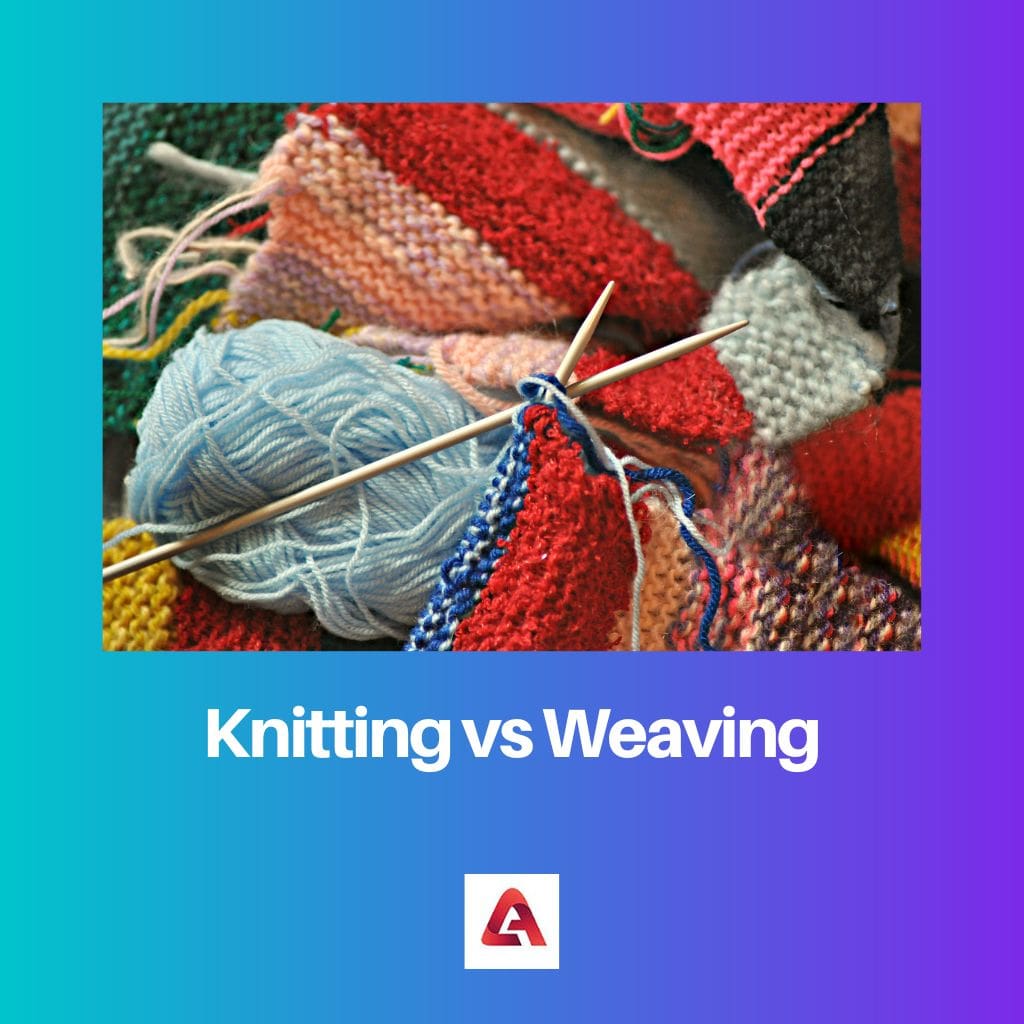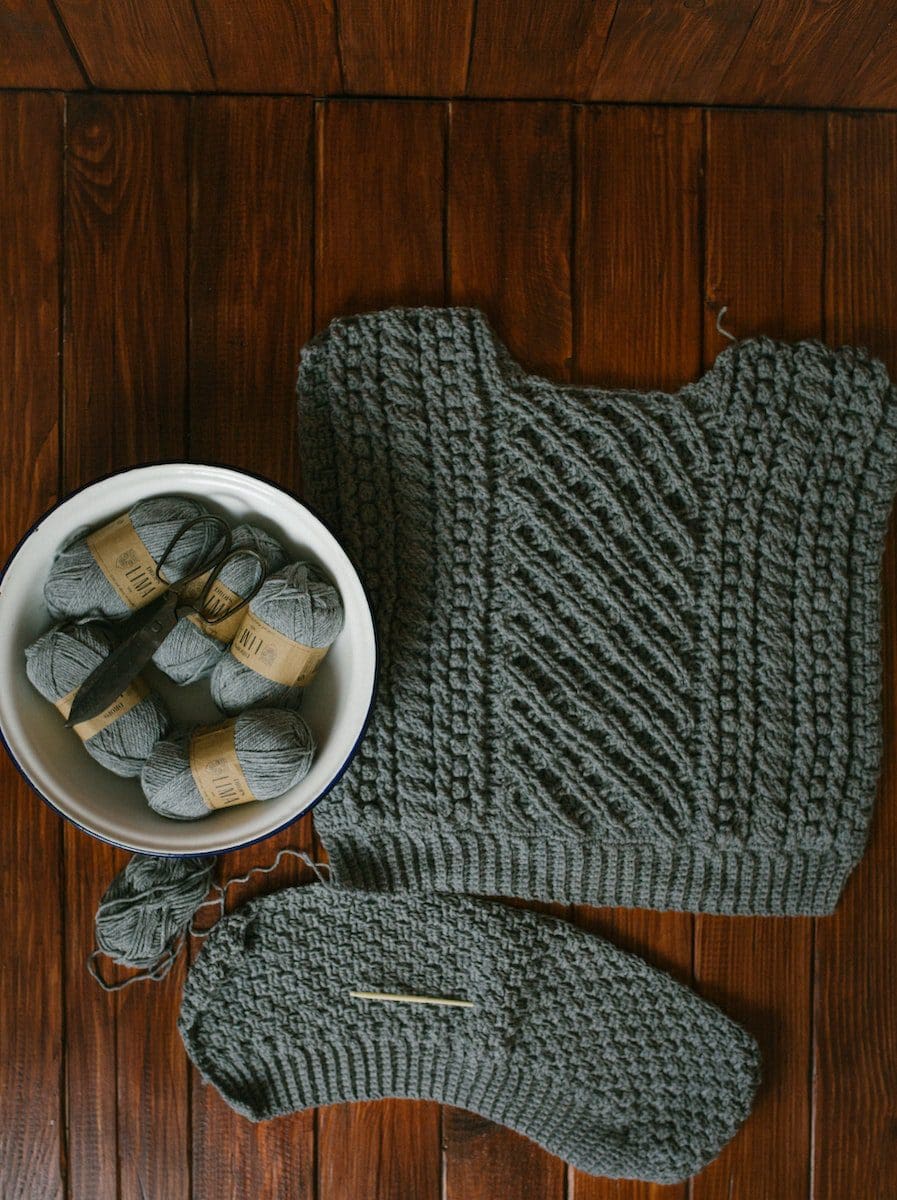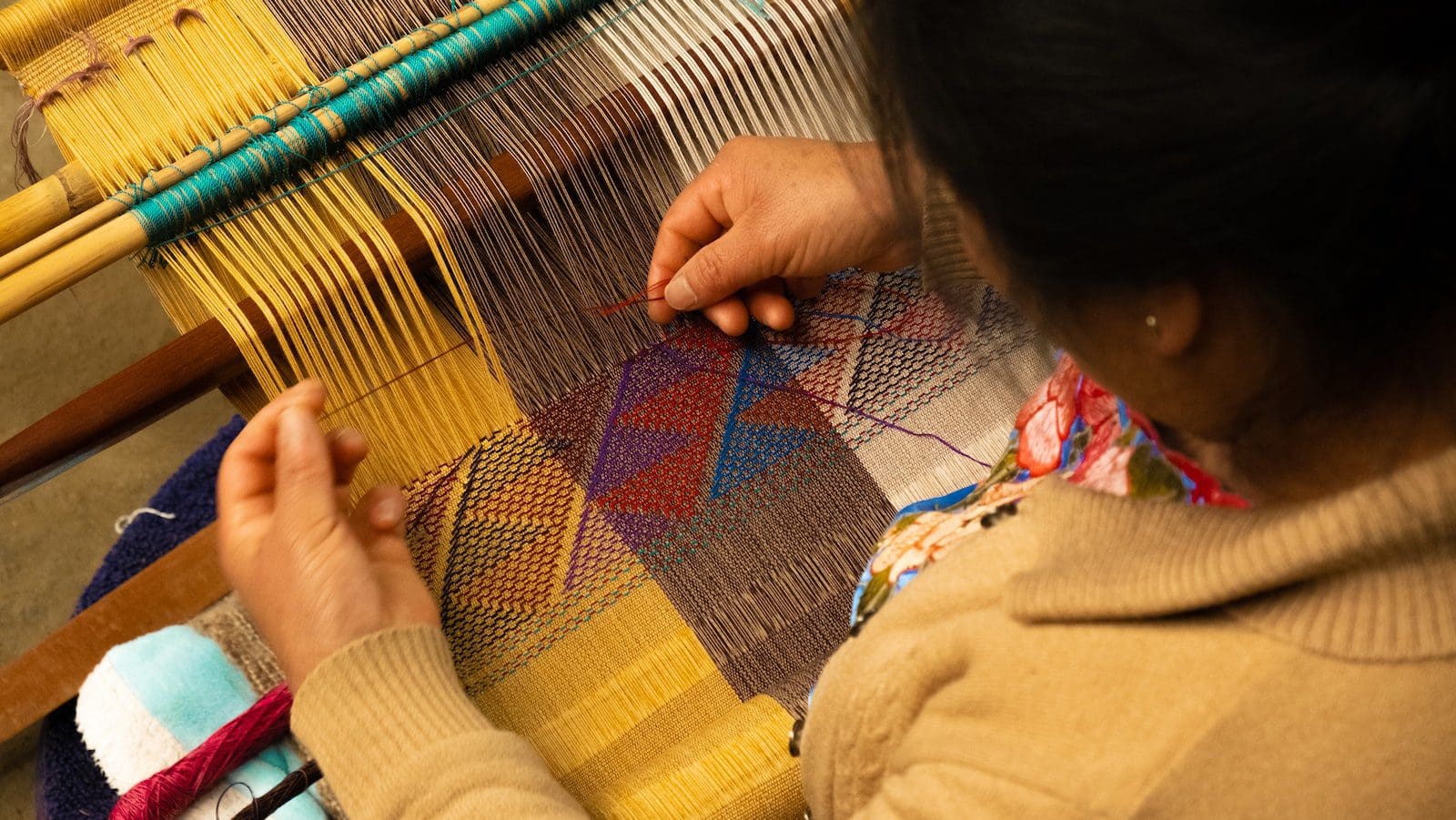Fabrics are a part of our everyday lives, but we hardly pay much attention to the details of their structure. However, the quality of a fabric depends profoundly on its architecture, the thread or yarn used, and the way it is stitched.
Most people deem weaving and knitting the same, but they are very different for a textile enthusiast.
Key Takeaways
- Knitting creates fabric by interlocking loops of yarn using needles, resulting in a stretchy material.
- Weaving involves interlacing two sets of yarn (warp and weft) at right angles on a loom, producing a less stretchy fabric.
- Knitted fabrics are ideal for garments that require elasticity, while woven fabrics offer durability and structure for items like upholstery and bags.
Knitting vs. Weaving
In knitting, threads are aligned in parallel. It can be stretched easily. The fabric used for knitting is thick. Knitting can be done to make woolen clothes. One long yarn is used in knitting. In weaving, a crisscross pattern is formed. It cannot be stretched easily. Thin fabric is used for weaving. Two sets of yarns are used in weaving to form a perpendicular structure.

Knitted and woven fabrics differ in quality because knitted are more elastic due to the threads running consecutively to each row. In contrast, weaved pieces of cloth are less stretchable since they have threads intertwined in a crosswise pattern.
The loops created in knitted fabrics that are the foundation of the cloth are called “bigths” whereas those in weaved fabrics are called warp and weft.
Comparison Table
| Parameter of Comparison | Knitting | Weaving |
|---|---|---|
| Thread alignment | Threads run parallel | Threads run perpendicular |
| Elasticity | More elastic and stretchable | Less Stretchable |
| Quality of fabric | Knitted fabric is thick | A weaved fabric is thin |
| Threads are called | Bights | warp and weft |
| Purpose | Used to knit woolen clothes | Used to stitch fabric that makes lighter cloth material |
What is Knitting?
Knitting is a form of stitching that uses threads to form thick cloth material. The threads in a knitted fabric run parallel and are made by forming loops.
These loops of thread are the foundation of the intertwined network of threads.
Textile aficionados call the threads that run parallel to each other nights, and a small piece of knitted fabric is known as a swatch. The fabrics are made with various threads, colors, and every type of needle used, which decides the quality of the final material.
Knit was derived from the word Knot since the process involves creating loops or knots while linking one row with another.
Knitting is done by pulling the current thread through the loops of the preceding row, which is again made into a loop as the basis of the next row. Knitted fabric is thick and has good water retention and thermal properties.
Due to the fabric’s structure and thermal properties, this stitch is used for making warm clothes, and threads such as yarn are used for knitting. Knitting also has a variety of stitches, such as knit and purl stitches, right and left-plated stitches, etc.

What is Weaving?
Weaving is an age-old process of interlacing threads in a criss-cross pattern. The fabric consists of a set of threads running longitudinal and another set woven at a perpendicular angle.
The longitudinal threads are called the warp, and those running ninety degrees are called the weft.
This process is best carried out using a loom that holds the warp in place while the weft is woven through it. The longitudinal threads may completely cover the weft that binds the warp or vice versa, depending on the spacing between the threads.
The different types of weaving patterns are tablet weaving, backstrap loom, or other techniques that do not involve looms. All these patterns, although different from each other, have the same perpendicular stitches.
With mechanical advancements, handlooms evolved into power looms, making the process more efficient.
Given the historical finding, weaving seems to have emerged long ago, primarily for basic clothing needs. However, it was deemed art only in the mid-20th century, and several artists experimented with the form using various materials, including fiberglass, metals, and cellophane.

Main Differences Between Knitting and Weaving
- The main difference between Knitting and weaving is that knitting means entangling the threads to run parallel, whereas, in weaving, the threads are warped to form a criss-cross pattern.
- Knitted and woven fabrics differ in quality because knitted are more elastic, whereas weaved pieces of cloth are less stretchable.
- Knitted fabrics, due to the stitching pattern, have thermal properties, and thus they are used for making warm clothes, whereas weaving is used to stitch fabric that makes lighter cloth material.
- Knitting is done by pulling the current thread through the loops of the preceding row, which is again made into a loop as the basis of the next row, whereas weaving is done using a loom that holds the warp in place while the weft is woven through it.
- The loops created in knitted fabrics that are the foundation of the cloth are called “bigths,” whereas those in weaved fabrics are called warp and weft.

- https://advances.sciencemag.org/content/3/1/e1600327?TB_iframe=true&width=363.6&height=658.8
- https://www.bcin.ca/bcin/detail.app?id=59552&wbdisable=true

Who knew there was so much to learn about knitting and weaving! This article has certainly broadened my understanding of textiles.
Indeed, the distinctions between the two are quite fascinating when examined closely.
An intriguing and educational read, no doubt.
I find it quite amusing how such everyday materials like fabric hold such intricate details. Great article!
Agreed, a thought-provoking and educational piece indeed.
I never realized the depth of detail and the complexity of both knitting and weaving. This has definitely expanded my knowledge on textiles.
Very informative and well-explained. It’s amazing how much complexity goes into something as simple as fabric.
I completely agree. The intricate differences between the two are quite fascinating.
I’ve always been fascinated by textiles, and this article only adds to my appreciation for the intricacies of fabric construction.
It’s great to see such a comprehensive breakdown of the differences between knitting and weaving. Very enlightening.
The quality of this explanation is commendable. I now have a much clearer understanding of the distinctions between knitting and weaving.
This article has opened my eyes to a new level of appreciation for the craftsmanship of textiles.
Absolutely, I feel like I’ve gained a lot of valuable insight into something I previously knew very little about.
This article has certainly dispelled many misconceptions about knitting and weaving. A very worthwhile read.
Absolutely, it’s refreshing to see such a detailed and comprehensive explanation of these textile techniques.
While this information is certainly valuable, I can’t help but wonder about the environmental impact of these differing fabric creation processes.
A valid point. It’s important to consider the environmental factors in textile production.
The author’s detailed descriptions leave no stone unturned. A truly educational piece.
This article is proof of how intricate and diverse the world of fabric creation really is.
A very well-explained comparison between two intricate textile processes.
It’s quite impressive how intricately different knitting and weaving are. The level of detail in this article is truly commendable.
Absolutely, the depth of detail in this article is remarkable.
The comprehensive description of knitting and weaving in this article has given me a newfound appreciation for textiles.
Absolutely, the level of detail and explanation in this write-up is truly impressive.